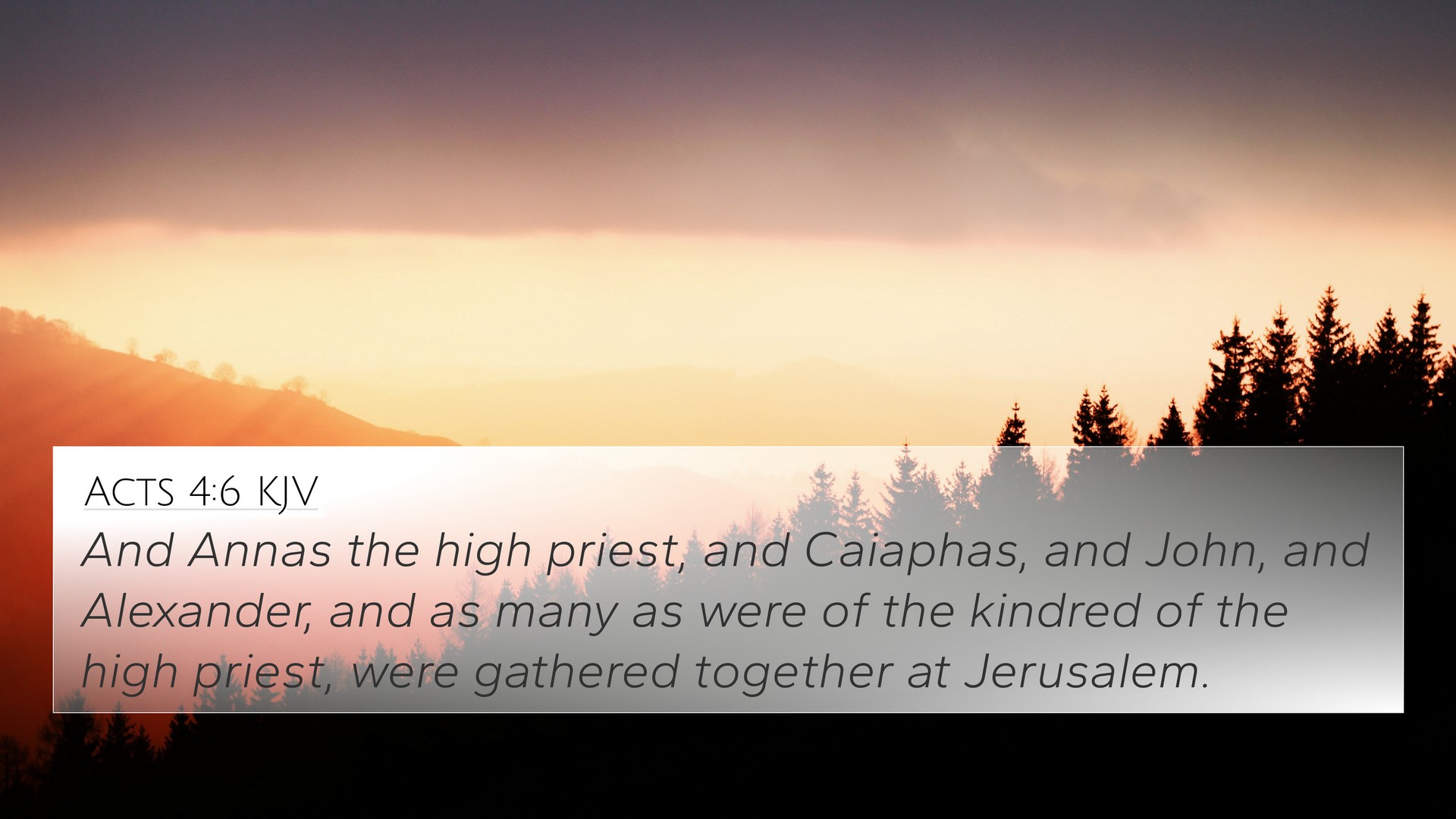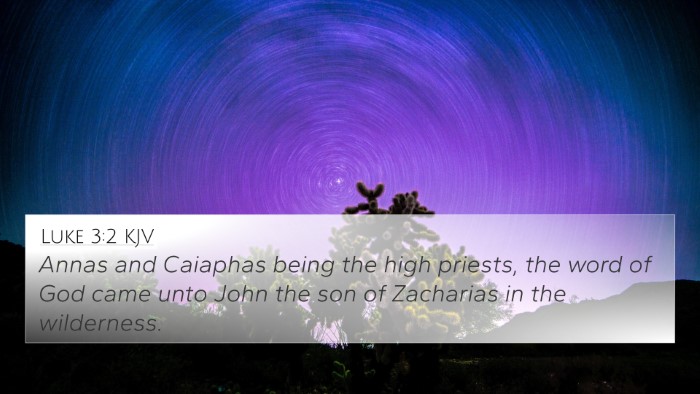Understanding Acts 4:6
Acts 4:6 states: "Annas the high priest, and Caiaphas, and John, and Alexander, and as many as were of the kindred of the high priest, were gathered together at Jerusalem." This verse introduces the key figures involved in the trial of the apostles Peter and John after they healed a lame man. Below is a combined interpretation based on insights from public domain commentaries.
Contextual Background
The early chapters of Acts describe a vibrant and dynamic beginning of the church following the ascension of Christ. This passage highlights the opposition that the apostles faced from the religious leadership of the Jewish community.
Characters Introduced
- Annas: The former high priest who still held considerable influence.
- Caiaphas: The current high priest, known for his role in the trial of Jesus.
- John and Alexander: Likely influential members of the priestly class.
- Kindred of the high priest: This signifies a broader family connection to the priestly tradition, underscoring the unity of these leaders against the apostles.
Significance of the High Priesthood
The selection of these high-ranking officials emphasizes the gravity of the situation. The high priesthood was a pivotal institution in Jewish religious life, representing authority and tradition. Matthew Henry notes that their assembly depicts a resolve among Jewish leaders to suppress the burgeoning Christian movement.
Religious Authority and Resistance
According to Albert Barnes, the gathering of such prominent leaders represents a concerted effort to address what they perceived as a threat to their authority. The healing miracle performed by Peter and John, along with the bold preaching of the resurrection of Jesus, could not be overlooked, prompting these leaders to take action.
Cross-references Related to Acts 4:6
- John 11:49-50: Caiaphas's prophetic statement about one man dying for the people.
- Matthew 26:57-68: The trial of Jesus before Caiaphas, offering context to the trials of His followers.
- Acts 3:1-10: The miracle that led to the arrest of Peter and John.
- Acts 5:17-18: Further arrests of the apostles by the high priest's order.
- Luke 22:66-71: The Sanhedrin's judgment on Jesus.
- Acts 4:1-3: The apostles being arrested for preaching the resurrection.
- Hebrews 7:11-28: A discussion of the priesthood, illustrating the transition from the Levitical system to Christ.
Thematic Connections
This scenario leads to deeper analysis through theological and historical lenses. Adam Clarke remarks that understanding the reactions of Annas and Caiaphas reveals human tendencies toward self-preservation and fear in the face of divine action.
Inter-Biblical Dialogue
Acts 4:6 can be examined through the lens of inter-Biblical dialogue, linking to themes of authority, prophecy, and the fulfillment of promises in the New Testament while reiterating the importance of the priestly line established in the Old Testament. This shows how the actions of the high priests in Acts directly parallel and fulfill the prophetic traditions seen throughout the scriptures.
Conclusion
In summary, Acts 4:6 serves not only as a historical account but also as a rich site for theological reflection on the nature of authority, faith, and the challenges faced by the early church. It calls believers to recognize the living narrative of Scripture, reflecting on how the unfolding story of the church continues to resonate through connections made between various Bible verses.
Further Study Tools
- Bible Concordance: A useful tool to locate verses related to specific themes.
- Bible Cross-reference Guide: This can help explore connections between different biblical texts.
- Cross-reference Bible Study: Engaging in this study method can enhance understanding of scriptural relationships.
As we delve deeper into the meaning of Acts 4:6, we invite further exploration of how this verse and others connect, enriching our understanding of the Scriptures as a cohesive narrative filled with divine truth.







